Choosing a pet tortoise
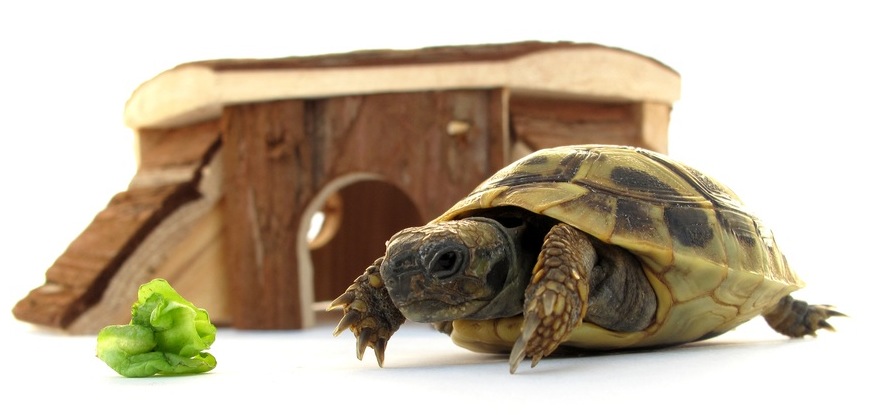
Be prepared to redraft your will when you acquire a tortoise as a pet, so you can plan for its future! Today's young tortoises are still likely to be alive when our grandchildren are elderly.
Whereas in the past, European species of tortoise were frequently imported under unsuitable conditions from their Mediterranean homelands and failed to thrive in more northerly latitudes, a much better understanding of their requirements has meant that they are now being regularly bred in the UK and North America too. If you are thinking about obtaining a young tortoise, the best time will be during the spring or early summer.
The types
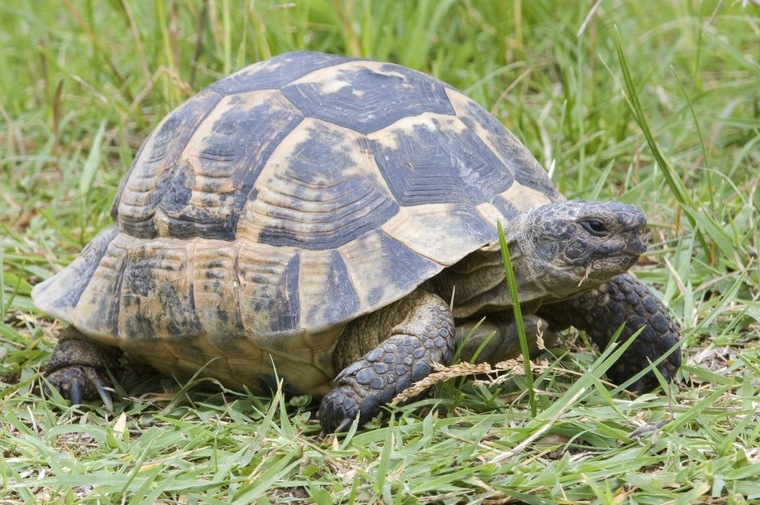
There are four different species which can be kept outside for part of the year in a garden when the weather is fine. It is possible to distinguish the Mediterranean spur-thighed tortoise (Testudo graeca) shown here by the presence of swellings or “spurs” located on each side of the tail. Do not confuse this with the African spur-thighed (Geochelone sulcata), which is less hardy and grows to a much larger size.
Hermann's tortoise (Testudo hermanni) lacks these spurs and has a longer, narrower tip to the tail. The marginated tortoise (T. marginata) has a flattened area looking rather like a skirt around the base of its shell at the rear of its shell.
All three are now banned from being imported from the wild. When you obtain any of these tortoises in the UK however, you must also be given what is known as an Article 10 sales certificate by the vendor, even if you are certain that they are captive-bred, to confirm they have been acquired legally. Keep this documentation in a safe place.
This requirement does not apply to the fourth species however, which is Horsfield's tortoise (Agrionemys horsfieldii), recognisable by its relatively flat shell and rounded body shape. It occurs both further east and north, compared with the preceding species. Even so, Horsfield's tortoises will not thrive in damp, cold conditions outdoors.
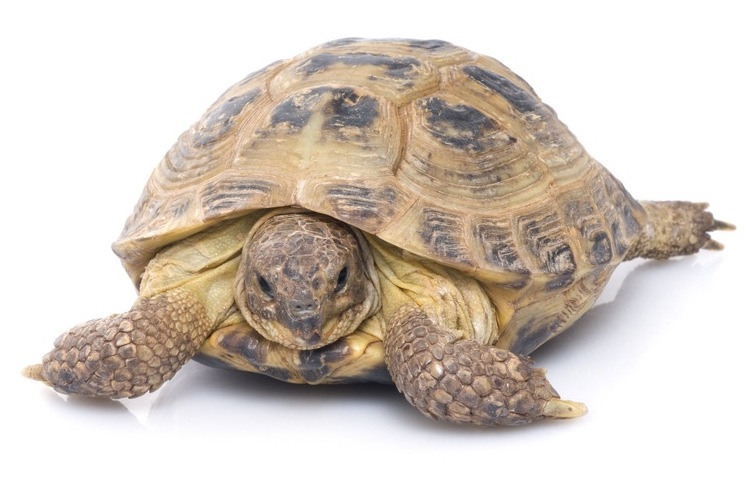
This species which extends over the Russian steppes, does, however, differ significantly in its habits from its relatives. It digs deep burrows where it shelters, and can be very adept at climbing wire mesh fences as well. You can find more information about them here.
A healthy individual
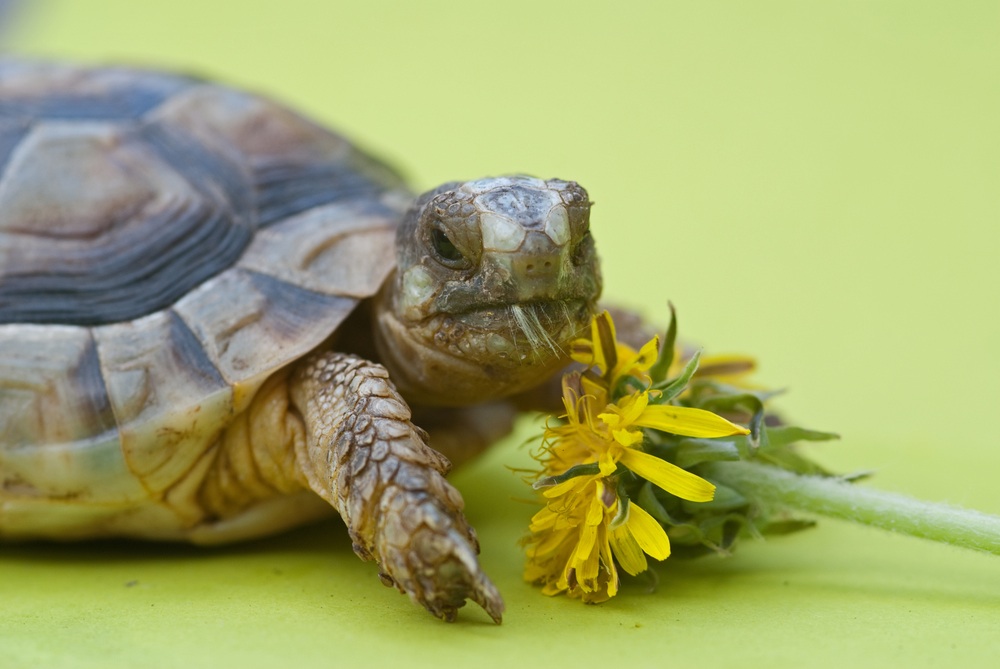
Young tortoises should be lively and open their eyes readily, especially when picked up. Check there is no discharge from the nostrils, and also look around the mouth. There is often greenish staining here, arising from plant juices, which is a good sign, indicating that the tortoise has been eating well. If you are considering several tortoises of similar size, try to select the heaviest one of the group. It is a good idea to buy some scales for weighing your pet as it grows, noting the figures in a notebook.
Tortoises are not social animals in nature, and so there is no need to acquire two, unless you want to do so, and have the space and facilities available for them. It will be virtually impossible to sex them at this early stage in life. Males develop a slight curvature of the underside of the shell, which is known as the plastron, as they grow older, and depending on the species, their tails may be longer as well. A male Hermann's is shown here.
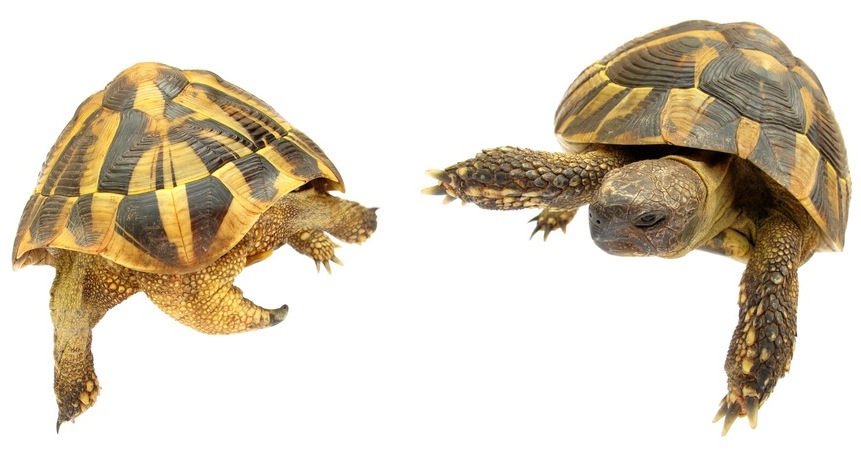
Housing
Many breeders today generally do not recommend vivariums for housing tortoises, partly because these enclosures are not well-ventilated, and so could predispose these reptiles to respiratory illness. The rigid bony body casing of the tortoise's shell to which the ribs are fused means that they cannot expand their lungs in the same way that we do. They also lack a diaphragm and are unable to cough, which leaves them susceptible to pneumonia.
A tortoise table has therefore become a popular alternative. This is usually a wooden structure, which can be mounted on legs, making a free-standing piece of furniture in a room. It needs to be equipped with a heat source, in terms of a lamp and also usually a thin heat mat, under thermostatic control. Lighting is provided by means of a special full spectrum light, with mimics the effect of sunlight. This is critical in helping to ensure healthy shell development.
There should also be a hide, where the young tortoise can retreat. When arranging decor within the confines of the table however, be sure that there is nothing that your tortoise can use as a stepping stone to get over the sides of the table, as even young tortoises may climb up here and could topple out over the edge on to the ground.
Setting up

Rather than starting out with a tortoise table therefore, it may be better to choose an indoor guinea pig or rabbit run. These have a solid plastic base and a detachable mesh top. The heat source can be arranged up at one end of the enclosure, creating a thermal gradient across the enclosure. Aim for a temperature of about 27°C (80°F) or so, with a thermometer at each end of the enclosure.
The light source can also be suspended from the mesh, away from the heat lamp but again, out of reach of the tortoise. Check on the instructions when fitting the electrical components in place, and seek advice from an electrician if you are unsure.
Ensure the background temperature in the room is warm enough as well, around 21°C (70°F). This can otherwise be a drawback to keeping young tortoises outside a vivarium, especially if the room is unheated during the day, as they can then become chilled and their appetite will be poor, leaving them vulnerable to illness.
A big advantage of a converted rabbit run is that it can be placed outside in the summer, partly in the shade, allowing a small tortoise to benefit from exposure to sunlight and yet remain safe. Various potential predators, including gulls and urban foxes could otherwise prey on these reptiles at an early stage in life if they were roaming free in a run.
Danger!

Be certain to ensure that the heat lamp in the tortoise's quarters is securely fixed in position, so that it cannot become dislodged. There was a recent case of a household fire caused by the heat source in the tortoise's enclosure falling down and coming into direct contact with the bedding.
Settling-in
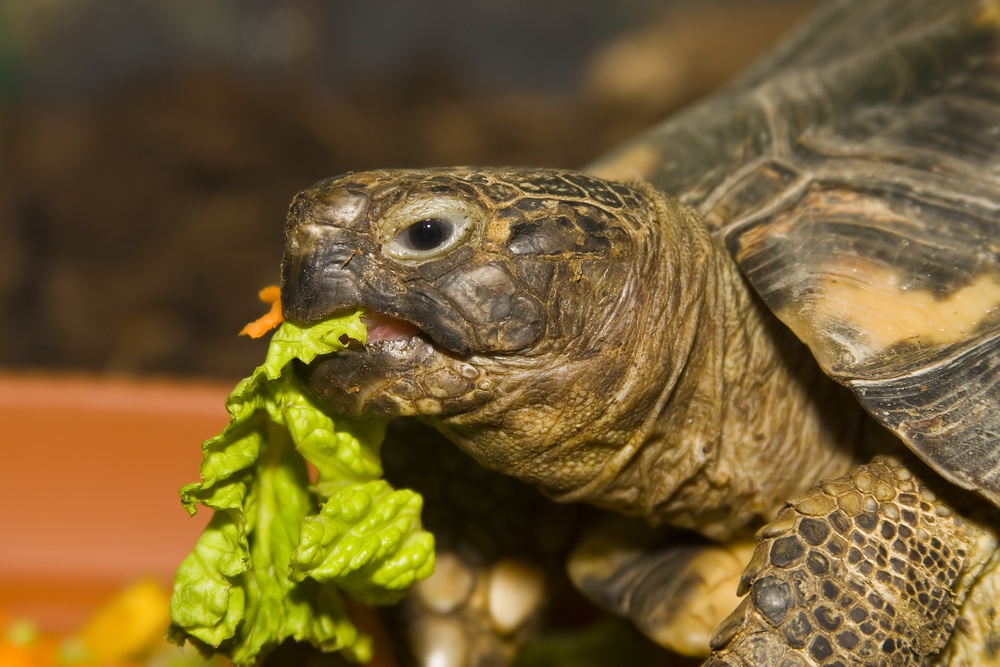
Although it may not be the most attractive option, using newspaper or paper kitchen towel as bedding will be safer than choosing sand, as this could be very dangerous if swallowed by the young reptile, leading to an intestinal blockage. Paper is absorbent and easy to change, and it can also be cut into strips to create bedding.
Heavyweight food and water pots will be necessary too, so these cannot be tipped over. Stick as closely as possible to the diet which the tortoise has been used to previously, so as to reduce the risk of any digestive disturbance when you first acquire your new pet.
Hibernation
For information about hibernation, click here.
Britain's oldest recorded pet
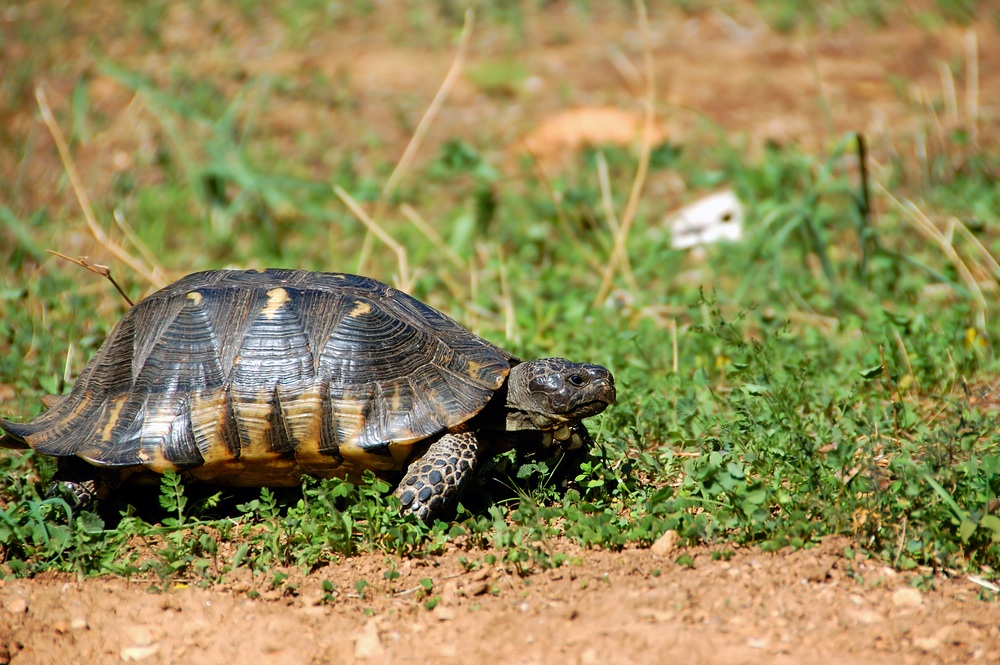
Timmy, a Mediterranean spur-thighed tortoise who lived at Powderham Castle in Devon was reckoned to be 165 years old when he died there in 2004, making him the UK's oldest resident at the time.
Timmy had arrived at the castle in 1892, although he spent his early life at sea, having been obtained originally from a Portuguese vessel by Captain John Courtenay of the Royal Navy back in 1854. The captain's descendants subsequently cared for Timmy right up until his death.